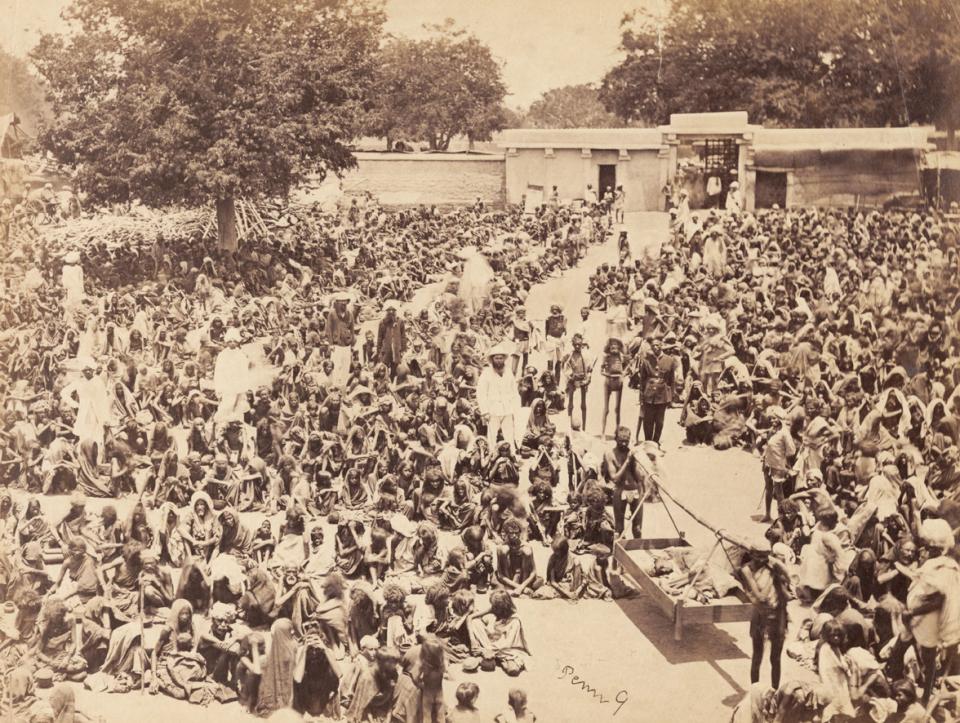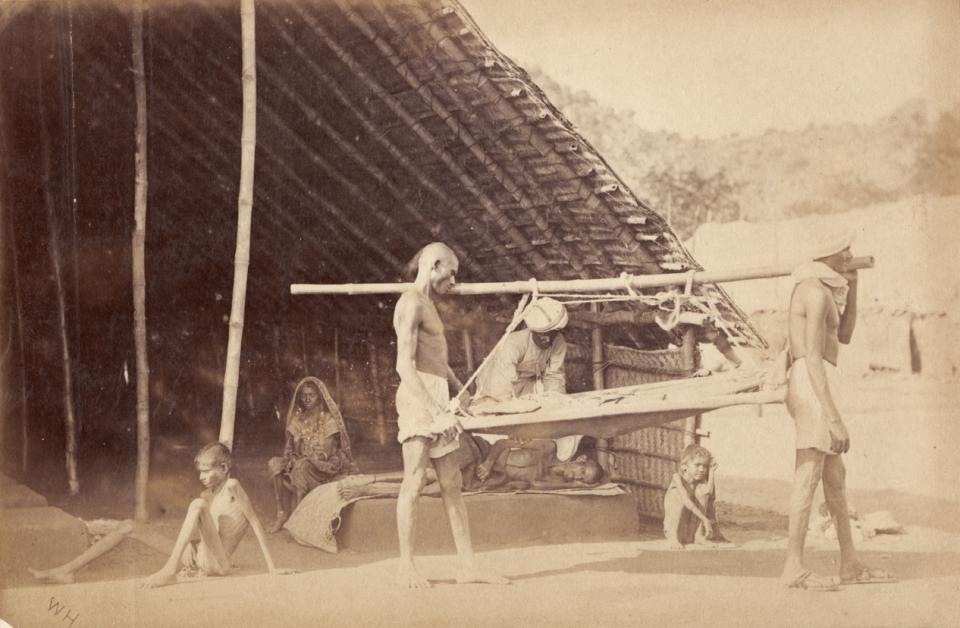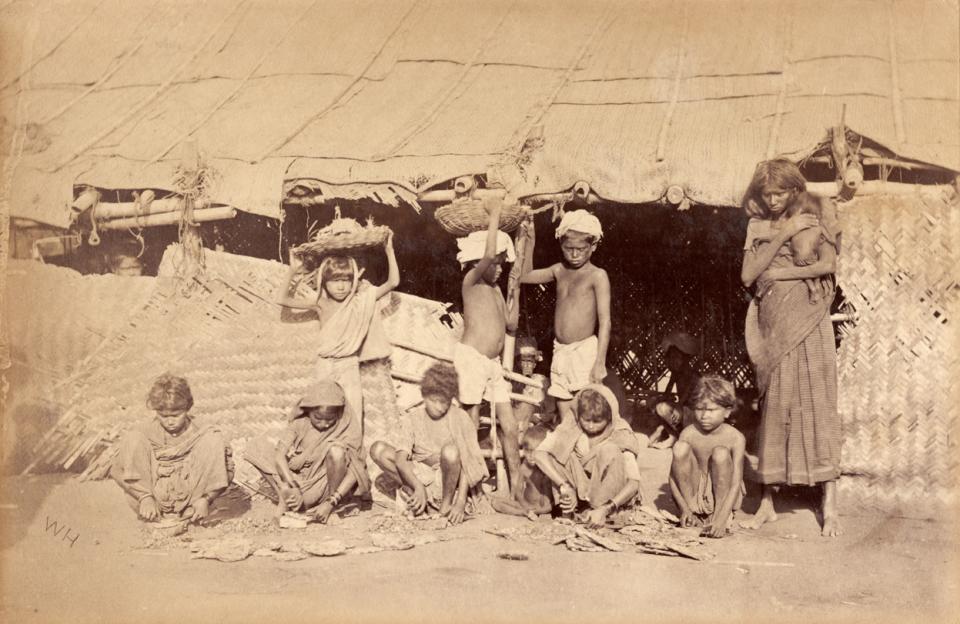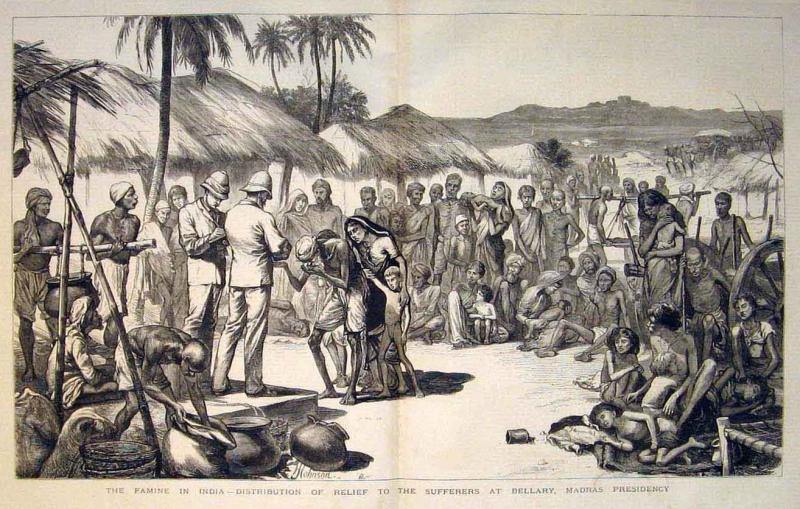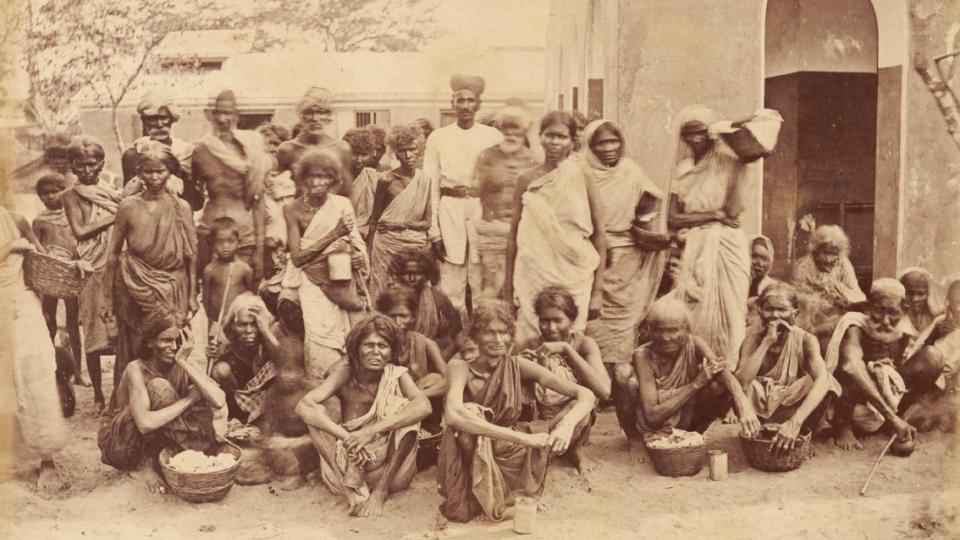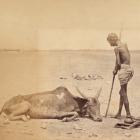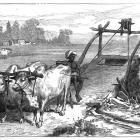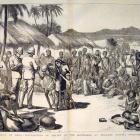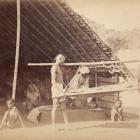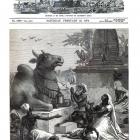Government response
While the British authorities devoted significant effort and money to their attempts to relieve famines in India, the relief efforts were often insufficient, and frequently faced obstacles from natural or cultural systems on the ground. In a very simple but damaging example, cultural factors from the colonized population led British aid to be refused: some groups refused to accept alms or beg for food, and instead tried to fall back on the resources in the forests that they had used in times of scarcity prior to British rule.26
Initially, British relief efforts proved inadequate to the environmental obstacles in India. In one significant example, a severe drought hit Orissa in 1865–66. By the time assistance from the British authorities arrived, nearly a million Indians had died. Efforts to transport food by ship to the affected province were hampered by bad weather, and when shipments did reach the coast of Orissa, they could not be transported inland. The costs of the relief efforts were very high, with critics pointing out that these excessive costs were in large part due to the high price of the supplied grain. In the two years of the famine, the British Indian government spent nearly 9.5 million rupees on famine relief for 30 million units (one day’s food for one person).27
Subsequent relief efforts showed only slow improvement. Following criticism for the badly bungled relief during the Orissa famine of 1866, the British authorities discussed and revised their famine relief policy. In early 1868, Sir William Muir (Lieutenant Governor of Agra Province) made a famous announcement that “every district officer would be held personally responsible that no deaths occurred from starvation which could have been avoided by any exertion or arrangement on his part or that of his subordinates.”28 When the Rajputana famine of 1869 spread through the British territory, the British authorities organized famine relief works in the British territory of Ajmer and in the neighboring Agra British India. In Ajmer, 900,000 rupees were used in the relief effort: 500,000 rupees in revenue remission, and 2.1 million rupees for agricultural credit. In Agra 3 million rupees were spent in relieving 29 million units. In the princely States of Rajasthan, Udaipur State spent 500,000 rupees.29 Still, these efforts fell far short of Muir’s goal: it is estimated that more than 1.5 million people died from starvation in this famine in the princely States of Rajasthan and the British Indian territory.
In the Bihar Famine of 1874, the response from the British authorities was more successful and there was little or no mortality.30 However, Sir Richard Temple, Lieutenant-Governor of Bengal, was criticized by many British officials for excessive expenditure on relief work. Taking the criticism to heart, Temple implemented stricter standards of qualification for relief and more meager relief rations. As a result, two types of relief were practiced: relief work for able-bodied men, women, and working children; and free, charitable relief for small children, the elderly, and the indigent.31 In January 1877, Temple reduced the wage for a day’s hard work in the relief camps in Madras and Bombay. After the wage reduction, workers were given one pound (0.45 kg) of grain plus wages for a full day of labor: one anna (four pennies) for a man and a slightly reduced amount for a woman and working child.32 This was justified under the thought that excessive pay might promote dependency.
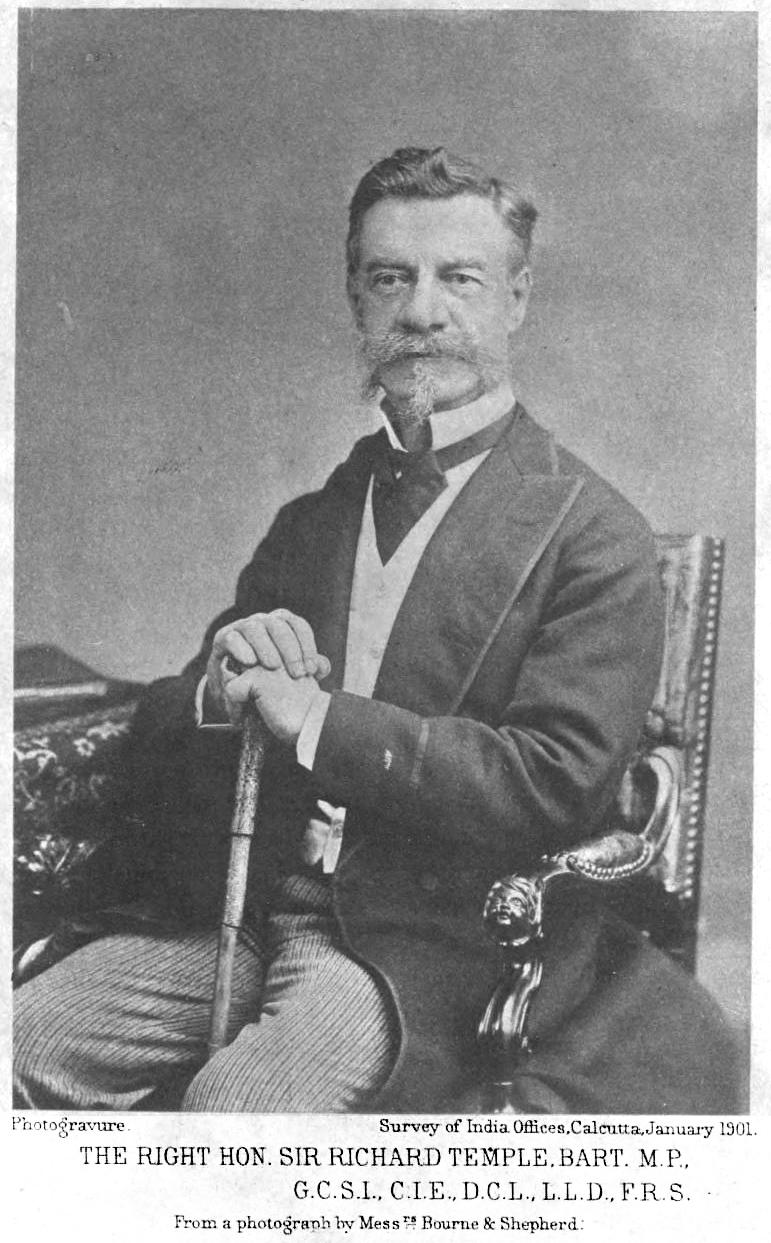
Sir Richard Temple, who framed difficult famine relief policy
Sir Richard Temple, who framed difficult famine relief policy
Photo by Bourne & Shepherd - Buckland, C.E. 1901.
 This work is licensed under a Creative Commons Public Domain Mark 1.0 License.
This work is licensed under a Creative Commons Public Domain Mark 1.0 License.
Temple’s recommendations were opposed by a number of officials; however, Temple enjoyed the confidence of Lord Lytton, the Viceroy of India, who supported his relief policy.33 By early 1877, Temple declared that the famine was under control, not without dissenters. William Digby countered that “a famine can scarcely be said to be adequately controlled which leaves one fourth of the people dead.”34 The Government of India spent about 800 million rupees on 700 million units in British India and 7.2 million rupees on 72 million units in the princely States of Mysore and Hyderabad.35
In the Indian famine of 1896–97, the relief was offered throughout the famine-stricken regions in accordance with the Provisional Famine Code of 1883. All in all, the relief was arranged for 821 million units at a cost of 72.5 million rupees. In addition, 12.5 million rupees of revenue were remitted and 17.5 million rupees of credit were offered. A charitable relief fund gathered a total of 17.5 million rupees, of which 12.5 million rupees were collected in Great Britain. In spite of all this, millions of people died of starvation and accompanying diseases during this hunger crisis. Although the famine relief was organized efficiently in the United Province, it failed in the Central Province, particularly among tribal people who, according to Famine Code Guidelines, did not qualify for relief.36
After public criticism of the response to this previous famine, during the Indian famine of 1899–1900 an improved famine relief action was organized. By July 1900, one-fifth of the Central Province’s population was on some form of famine relief. After abundant rainfall, most famine relief works were consequently closed by December 1900.37
26 Mahato, “Environmental Change and Chronic Famine,” 85–86.
27 Klein, “When the Rains Failed,” 185–214; The Indian Empire, Economic, 486.
28 Ibid., 478.
29 Ibid., 478, 487–8.
30 Ö. Ertem, “British Views on the Indian and Ottoman Famines: Politics, Culture, and Morality,” In RCC Perspectives: The Imagination of Limits. Exploring Scarcity and Abundance, edited by F. Felcht and K. Ritson, 17-29. Munich, 2015.
31 The Indian Empire, Economic, 489.
32 Ibid.; D. Hall-Matthews, “Inaccurate Conceptions: Disputed Measures of Nutritional Needs and Famine Deaths in Colonial India,” Modern Asian Studies 42, no. 6 (2008): 1189–212.
33 Davis, Late Victorian Holocausts, 36–37.
34 Davis, Late Victorian Holocausts, 39–40.
35 The Indian Empire, Economic, 489.
36 The Indian Empire, Economic, 491.
37 T. Dyson, “On the Demography of South Asian Famines, Part I,” Population Studies 45, no. 1 (1991): 5-25.


